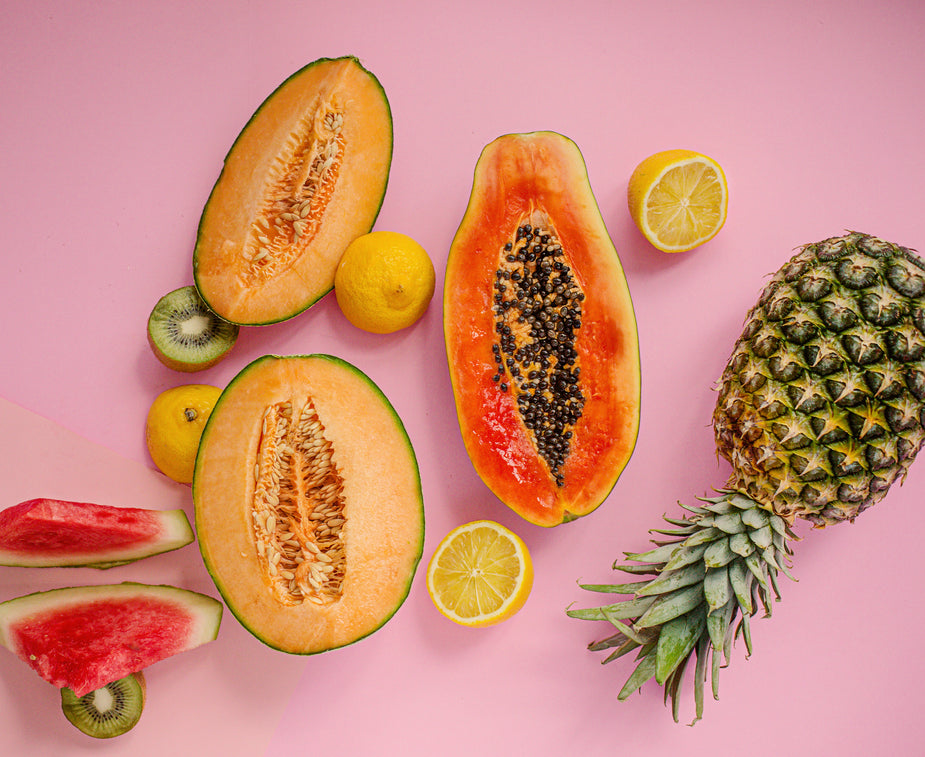Eat the deepest, darkest, richest colors of fruits and vegetables you can find. White foods – potatoes, pasta, rice, corn – have been reduced in the diets of many health-minded people. Some are motivated to lower the percentage of carbohydrates in their diet. Some want to lose weight. Others are looking for phytonutrients.
You’ve probably heard since grade school you should eat a wide variety of fruits, vegetables, grains and nuts. After watching yesterday’s Ominvore’s Dilemma video by Michael Pollan, I believe the width of the variety is more important than I had thought. We get most of our food from four plants, he said. All together now: “That’s just wrong!”
I attended a nutrition lecture given by Dr. Michael Gregor. Annually, he reads hundreds of peer-reviewed nutrition studies to remain current with the latest scientific evidence on nutrition. In his game-show style presentation, he flashed pictures of related fruits and vegetables and asked the audience to answer, for example, which apple is better for you?
- golden delicious
- ambrosia
- McIntosh
- red delicious
Which is it? While these are not the same apples used in Dr. Gregor’s talk, I remember the winner was red delicious. I was disappointed, because golden delicious was my favorite. (I find red delicious skins are often tough.) But by the time that round of quizzing was over, I’d caught onto how to answer each question correctly. The food with the deepest color wins. Thus, winter squash are going to deliver greater vitamins and more phytonutrients than are summer squash.
Unfortunately, pine nuts (another favorite of mine) ranked lowest on the list of nuts, with _____ delivering the best nutritional value. (Type in your answers below. I’ll pop back to the blog and update you after we have several guest answers.) But that makes sense: pine nuts are white.
Therefore, it’s illogical to peel the red delicious apple before eating it, right?
The most-popular vegetable in America is broccoli. It’s very good for you. But Swiss chard has nearly 20 times as much vitamin A! However, broccoli has nearly four times as much folate and nearly three times as much vitamin C. That’s why you need to graze all the way down the greens aisle. I know I would be happy with green peas, green beans, spinach and broccoli. After hearing Dr. Gregor’s talk, I’ve made a concerted effort to also eat mustard greens and turnip greens. (I haven’t bought collards yet, but I’m thinking about it.)
I even switched onions. Which offer the most healing power to the body? I think you can guess that would be red. He threatened he never wanted to see or hear of any of us ever buying a white onion again. (Busted: that was my favorite, but I’ve switched.)
In Weight Watchers I learned most people eat the same 15-20 foods over and over. My list is over 100. And I’m still broadening it. According to Pollan’s analysis, soy burgers, tofu, soymilk, tempeh, etc would be one food. Why? They’re all from the same plant. Counting the source would reduce my “varieties.”
Are you ready to take the eat deeper colors challenge? And diversify y0ur fruits and vegetables? You can find nutrition values online, but you don’t really need them, unless you’re treating a specific condition. Just follow that grade school advice: eat a wide variety. And add to that advice: Eat color!
Photo courtesy of PDPhoto.org
